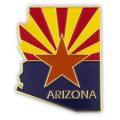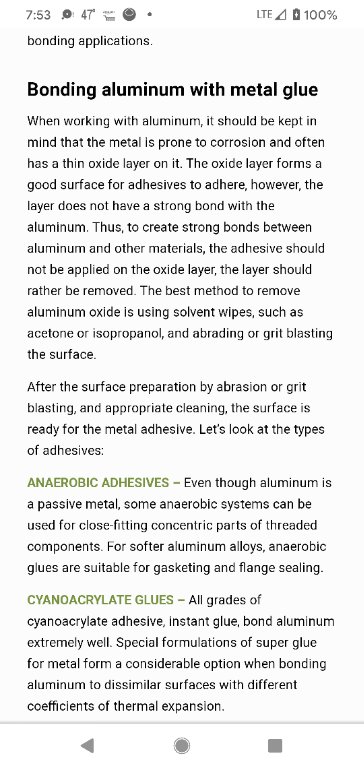-
Senior Member

3M 8115 vs HSRF for bonding fiberglass to fiberglass (ie scoop)
Is one better than the other? To me, the 8115 looks superior but you have to buy the applicator gun. Thanks!
Dave
MK3.1 2004 Mach 1 donor. ABS, PS, TC.
GTM #304 LPE 525hp LS3
2000 C5 Lingenfelter LS1@489hp
1999 Corvette FRC/Z06 track car
-
I have quite a bit of experience with fiberglass on both cars and boats. Think Corvettes and Hobie Cats. I currently have one of each.  3M 8115 is an epoxy. A lot of new cars are "glued" together now instead of welding. They use that stuff. It is great stuff and very strong. 3M HSRF is vinyl ester filler designed primarily for boats. It's a filler and is not really intended to be used to bond panels together I don't believe. So, you are right. 8115 is better in a sense. Both are very good for their intended purpose though.
3M 8115 is an epoxy. A lot of new cars are "glued" together now instead of welding. They use that stuff. It is great stuff and very strong. 3M HSRF is vinyl ester filler designed primarily for boats. It's a filler and is not really intended to be used to bond panels together I don't believe. So, you are right. 8115 is better in a sense. Both are very good for their intended purpose though.
For structural repairs I would use an epoxy. For non structural repairs, I would use whatever the panels are made of. In this case they are vinyl ester or plain old polyester resin and glass. Regardless, an easy solution here in my opinion would be to use West System Six10. It is an epoxy that comes in tubes like caulk. No mixing is required. It is applied using an ordinary (cheap) caulk gun. It is great stuff and since it is epoxy it is quite strong. I have been getting it from Chesapeake Light Craft (clcboats.com).
HTH
-
Post Thanks / Like - 1 Thanks, 0 Likes
-
You don't have to buy the applicator gun.....you could just push each piston down the same depth with a dowel and dispense the 2 parts onto a mixing board (cardboard), mix by hand and apply by hand. More often than not here, we end up just squirting the epoxy out on cardboard (with the applicator gun), mixing it by hand and applying it with a wooden craft stick......mostly because many of the projects we use it on here are small and there is no sense in using the mixing tube attached to the gun to mix it since the amount we're using is probably close to the amount of waste you end up with the mixing tube.....the whole mixing tube is full of epoxy that goes to waste.
Yes, to do the roof scoop or larger projects like that, it is very handy to have the gun and mixing tube so you can dispense it right onto the part.....
Shane Vacek
VRaptor SpeedWorks, LLC
www.vraptorspeedworks.com
Turn-key GTM, SL-C & Ultima GTR Built to Your Specs!
Offering a full line of GTM Upgrades and Custom Parts
-
Post Thanks / Like - 1 Thanks, 1 Likes
-
Senior Member

MK3.1 2004 Mach 1 donor. ABS, PS, TC.
GTM #304 LPE 525hp LS3
2000 C5 Lingenfelter LS1@489hp
1999 Corvette FRC/Z06 track car
-
Personally I would use fiberglass with epoxy resin. And maybe mix your own “cat hair” with chopped fiberglass from eBay (carbon fiber is available too) with the epoxy resin (to clarify: regular epoxy resin) since cat hair filler is only available in polyester. btw Beeman I have the applicator gun if you want to borrow it. I can ship it to you.
Last edited by HardRocker; 03-25-2020 at 08:46 PM.
-
Seasoned Citizen

I used 3M Panel Bond to bond the top on my hot rod to the body and it works great. Do not mix glass fibers with it -- use as the directions indicate and note that this bonding agent has limits on how big gaps can be. It's not designed to be a filler so tighter gaps are better. That said, I had some places where the gaps were ~1/4" and it still bonded great. Epoxy bonds well to fiberglass but take care in applying it as fiberglass resin does not play nice with cured epoxy -- so don't get sloppy. And spring for the mixing gun -- it's worth it as it will easily lay a uniform bead where you want it.
My car gets harder use than most street cars as beside street duty it is primarily a serious competitive drag race car subject to tire shake and high speeds. No cracks or indications of any incipient failures in over two-years of hard use. And the body has been off and on the chassis countless times; every time lifted by the top using straps through the window openings.
Dart Little M 406" SBC 800 HP N/A & 1,100 HP on nitrous, 2-spd Powerglide with trans brake, 6,000 RPM stall converter, narrowed Moser 88 3.90:1 spool with 35-spline gun-drilled axles & Torino bearings, custom parallel four-link, custom tube chassis & roll cage NHRA certified for 8.5-sec (only two FFR Hot Rods have this cert).
33 Hot Rod Super Pro Drag Racer Build:
33 HR NHRA Cert Roll Cage Build
-
Senior Member

I have been using the 3M 8115 Panel Bond and it works great, I do have the gun and tips and have also just push out onto cardboard and mixed when applying with craft stick. Sands well if needed which is another good thing.
-



Originally Posted by
Davew70

I have quite a bit of experience with fiberglass on both cars and boats. Think Corvettes and Hobie Cats. I currently have one of each.

3M 8115 is an epoxy. A lot of new cars are "glued" together now instead of welding. They use that stuff. It is great stuff and very strong. 3M HSRF is vinyl ester filler designed primarily for boats. It's a filler and is not really intended to be used to bond panels together I don't believe. So, you are right. 8115 is better in a sense. Both are very good for their intended purpose though.
For structural repairs I would use an epoxy. For non structural repairs, I would use whatever the panels are made of. In this case they are vinyl ester or plain old polyester resin and glass. Regardless, an easy solution here in my opinion would be to use West System Six10. It is an epoxy that comes in tubes like caulk. No mixing is required. It is applied using an ordinary (cheap) caulk gun. It is great stuff and since it is epoxy it is quite strong. I have been getting it from Chesapeake Light Craft (clcboats.com).
HTH
Have you used both the 8115 and the Six10 products? I just looked up the Six10 product today and it looks very promising.....especially the fact that it's bout 1/3rd the cost of the 8115. My biggest question is, how sandable is it? The 8115 sands down much like body filler....it doesn't really clog up the sand paper and feathers out pretty well. This is just another reason why I would never use fiberglass resin/fiberglass mat to bond anything....#1 because it doesn't work, and #2 because it is completely non-sandable. If the Six10 product sands well, I'd be very tempted to give it a try.
Shane Vacek
VRaptor SpeedWorks, LLC
www.vraptorspeedworks.com
Turn-key GTM, SL-C & Ultima GTR Built to Your Specs!
Offering a full line of GTM Upgrades and Custom Parts
-

Originally Posted by
Davew70

A lot of new cars are "glued" together now instead of welding. They use that stuff. It is great stuff and very strong.
HTH
Many aircraft as well. btw Loctite has a great online video series on modern adhesives and their attributes and their uses in industry.
-
Senior Member

Great info guys, thanks for the offer HardRocker! I did order some 8115 and will hand mix it and see how it goes to start. I was reading more about the adhesives and one thing stuck out, making sure you remove the oxide layer right before bonding aluminum.

4gd5444r.jpg
MK3.1 2004 Mach 1 donor. ABS, PS, TC.
GTM #304 LPE 525hp LS3
2000 C5 Lingenfelter LS1@489hp
1999 Corvette FRC/Z06 track car
-
Great post, Beeman! That is what we always do when bonding aluminum.....for example, when bonding the louver braces to the louvers on all of my louver products, we hit the whole panel and the braces with a DA with 220 grit.....then assemble the braces onto the louvers, wipe down the areas we're going to bond with isopropyl alcohol and then apply the 8115.
Shane Vacek
VRaptor SpeedWorks, LLC
www.vraptorspeedworks.com
Turn-key GTM, SL-C & Ultima GTR Built to Your Specs!
Offering a full line of GTM Upgrades and Custom Parts
-
Senior Member

It is great post by both, you really do have to get oxide layer off the aluminum to get a good bond, it not you can actually pull the part off the aluminum side like a weld that did not penetrate the metal. Like Shane I have been using 180 -220 grit to remove oxide and get to good aluminum before bonding and it work well when you make preparation is done before bonding the parts. And I will also restate the fact that the 8115 sands like body filler so easy to shape and clean edges when bonding is complete.
-
I did the same preparation on my aluminum panels before I sprayed them with bed liner. 120 or aggressive scotchbrite pad, clean with acetone, and hang in my "booth" to coat. Seems to hold up really well if prepped properly. Although I try to be as carful around my finished panels as I can, there have been a couple slips with a wrench, bam right into the coated panels and you can't even tell I hit it.
-
Rough up everything before bonding anything! Scotchbrite pads are invaluable. And Beeman if you need the gun, let me know. I used it once for our C6 Vette and don't anticipate using it anytime soon.
-
On the subject of surface prep, make sure you hit the aluminum with acetone or a similar prep solvent before stripping off the oxide layer. You don’t want to drive contaminants into the “good” aluminum when you sand off the oxide layer. Some may consider this to be excessive but it’s part of best practices for bonding. Your bond is only as good as your surface prep.
-
Senior Member

Good point I have been using acetone to wipe down the aluminum and lacquer thinner along with denatured alcohol to wipe down fiberglass after sanding off shine and roughing it up to so the body work.
-
I use a more aggressive grit than 220 since the bonded surfaces will not be seen. I’ve even used a hacksaw blade to put shallow crosshatching into the surface, as well as drilling my bracket to be glued with several strategically placed 1/8” holes to allow the glue to extrude through. This acts somewhat like a mechanical fastener such as a rivet.
-
Post Thanks / Like - 0 Thanks, 1 Likes
 dlud
dlud liked this post
-
Senior Member

For surface abrasion of the fiberglass, I usually knock down the outer layer (or thickness that I'll be building back up) with a flap sander (about 60 grit) on an angle grinder. But even with the 60 grit, there's still a sheen to the fiberglass. So I have had good luck with a small (~2 inch) diameter wire brush on a cordless drill, I go over the surface completely, then rotate 90 degrees and go back over it again, which makes a nice crosshatch pattern which really helps the bonding agent bite.
Like this https://www.amazon.com/Forney-72733-.../dp/B000TGC3WI

Last edited by beeman; 03-30-2020 at 07:25 AM.
MK3.1 2004 Mach 1 donor. ABS, PS, TC.
GTM #304 LPE 525hp LS3
2000 C5 Lingenfelter LS1@489hp
1999 Corvette FRC/Z06 track car




 Thanks:
Thanks:  Likes:
Likes: 


 Reply With Quote
Reply With Quote 3M 8115 is an epoxy. A lot of new cars are "glued" together now instead of welding. They use that stuff. It is great stuff and very strong. 3M HSRF is vinyl ester filler designed primarily for boats. It's a filler and is not really intended to be used to bond panels together I don't believe. So, you are right. 8115 is better in a sense. Both are very good for their intended purpose though.
3M 8115 is an epoxy. A lot of new cars are "glued" together now instead of welding. They use that stuff. It is great stuff and very strong. 3M HSRF is vinyl ester filler designed primarily for boats. It's a filler and is not really intended to be used to bond panels together I don't believe. So, you are right. 8115 is better in a sense. Both are very good for their intended purpose though.






